A popular herb for outdoor and indoor home gardens, rosemary is fragrant, abundant, and wonderful in a variety of dishes. If you want to add this easy-to-grow herb to your garden, it doesn’t take a lot of effort or know-how to help it thrive. Like many herbs, rosemary likes soil rich in nutrients, just enough water, and plenty of sun. You should make sure that there is adequate drainage to keep the roots from getting waterlogged, especially if you are growing rosemary in a container or indoor garden. Even if you are a novice gardener, it doesn’t take a lot of expertise to tend rosemary. This makes it a good option for those who are new to gardening.
Sometimes, however, you may want or need some extra help to keep your garden growing and flourishing. That’s where companion plants come in. There are some quick steps that you can take, especially when designing your garden, to make it even easier to cultivate. If you don’t have a very green thumb, just planting the right things near each other can make magic happen in the soil.
Known as companion plants, these other herbs, flowers, and vegetables work with the rosemary to help it grow. The best companion plants create a mutually beneficial situation that works for both plants. This also makes it easier for you, the gardener, to keep them thriving and happy. Sounds like a win-win-win to us! Try planting one of these companion plants with your rosemary in your garden.
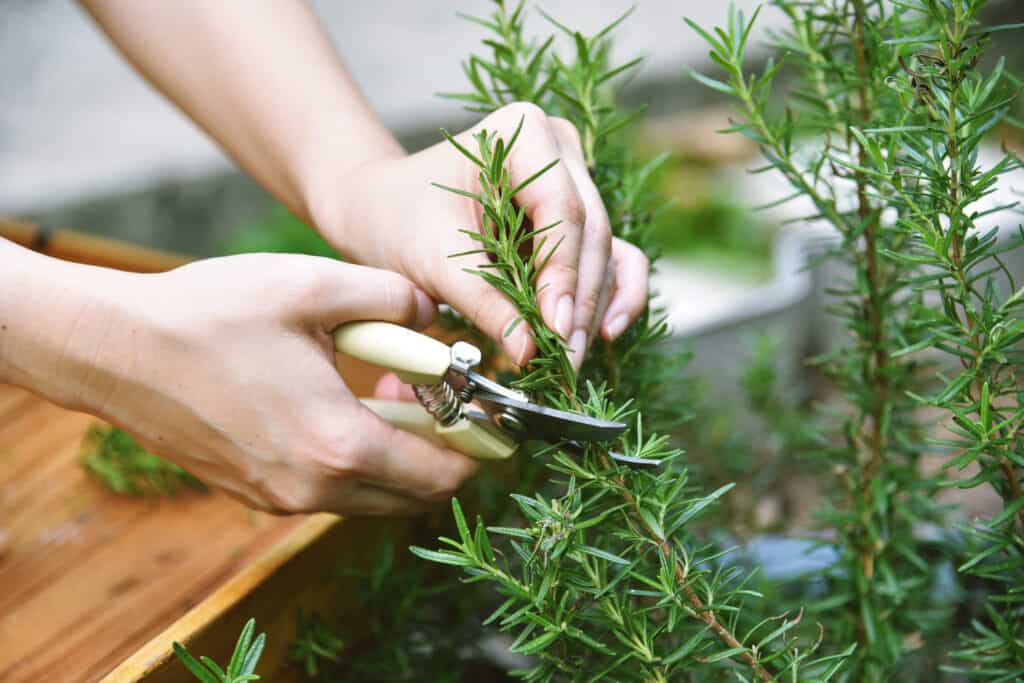
Rosemary has deep green needles, similar to a pine tree.
©iStock.com/Artfully79
Ideal Climate for Rosemary
Keep in mind that rosemary likes hot, humid weather and doesn’t do well in the cold. For this reason, it’s a good summer crop. If you want to keep rosemary year-round and live in a climate that gets a cool or cold winter, try growing it in a pot that you can move indoors when the temperatures start to drop. This can reduce the options for companion plants that are directly next to the rosemary since you are limited by available size and space. But even in these situations, you can opt for a companion plant that likes similar conditions. This will make it easier for you, the plant parent, to tend to their needs.
Rosemary also has specific water requirements. You should make sure that it gets enough water but avoid overwatering. The soil should dry out between waterings. In most cases, this means weekly watering is just right to keep the rosemary happy and healthy, although you may be able to space it out a bit more in humid climates.
#1 Marigolds
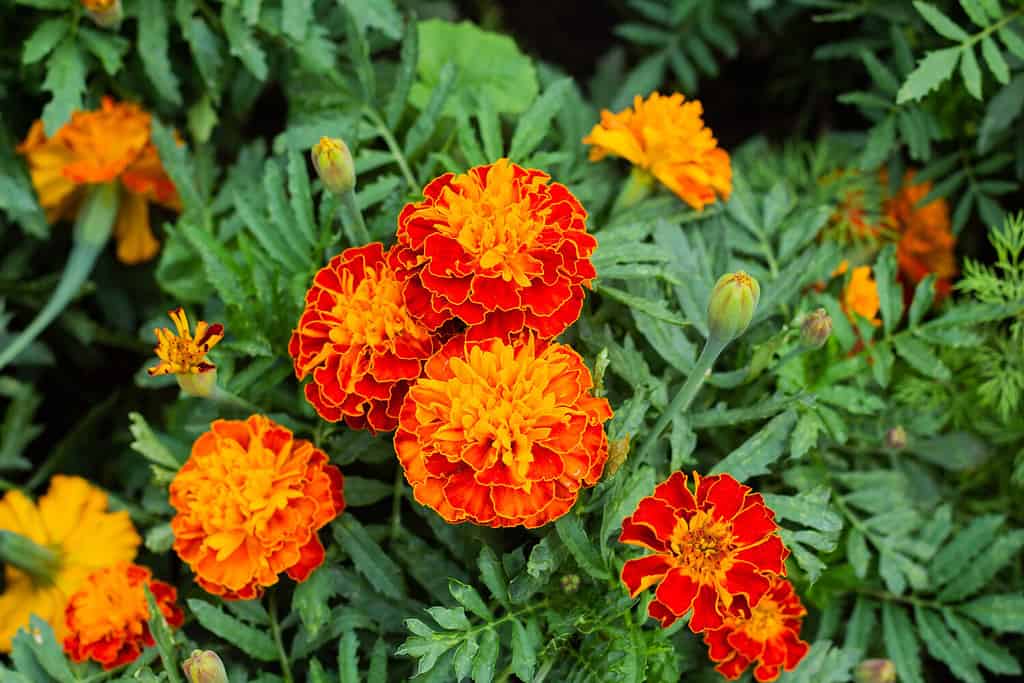
The brilliant-colored blooms of marigolds have the added bonus of deterring insects.
©FunFamilyRu/Shutterstock.com
We’re starting our list with one of the best companion plants of all, marigolds. These charming yellow flowers naturally repel many types of insects and can actually protect the rosemary and other plants in your garden from pests. We like them as a border on the edge of a raised bed or next to particularly vulnerable plants. Plus, they look great and add a fun pop of color.
You can plant marigolds directly into the soil or in containers. Many gardeners choose to put them in strategic places in the garden as well as in containers around entrances to their homes, porches, or patios. They can help keep troublesome insects away from your other plants and areas that you want to enjoy bug-free.
While they need sun and water to survive, marigolds are surprisingly adaptable. They can grow in full sun or partial shade. They like moist soil but can also tolerate some dry spells without negative impacts. This makes them good not just for rosemary but for just about any plant in your garden.
#2 Lavender

Lavender adds a fun pop of purple to your garden.
©Kristen Prahl/Shutterstock.com
Both lavender and rosemary originally come from the Mediterranean areas and like similar growing conditions and climates. So it isn’t surprising that these two plants make great companions in your garden. They like similar amounts of sun and water. You can plant lavender alongside rosemary in the same area of your garden or yard that gets plenty of sun.
Keep in mind that both rosemary and lavender need plenty of room to grow. They can both get quite large and may not be happy when planted in the same container. Lavender can tolerate colder temperatures than rosemary but is also happy in the hot, humid environment.
#3 Sage
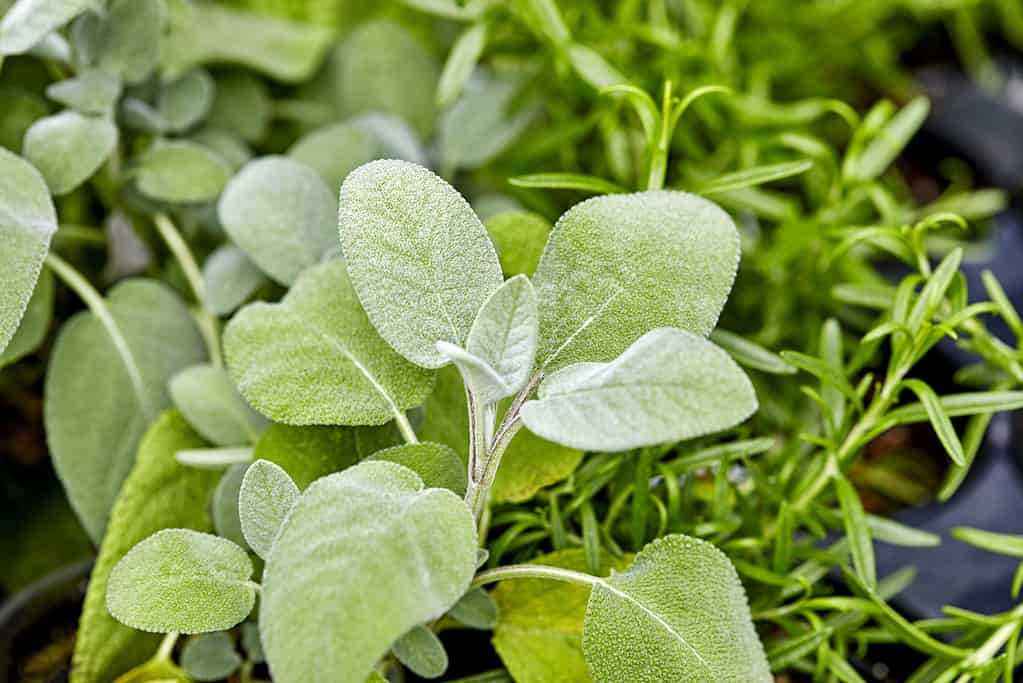
Fresh organic sage does great when growing outdoors in a garden.
©iStock.com/wingedwolf
Another fragrant herb, growing rosemary and sage together can result in a sensory experience unlike any other in the garden. Tending these two plants will result in wonderful smells as you press the leaves between your fingers and hands. They have similar sun and water needs so you can plant them quite close and not worry about separating them. This allows you to make the best use of your space, which is especially important in a small garden.
Rosemary can also benefit sage as it grows. When grown together, the sage flavor is often boosted thanks to the presence of the rosemary as it grows in the soil. This type of mutually beneficial growth is one reason that so many gardeners rave about planting rosemary and sage together as companion plants.
#4 Thyme

French thyme has a sweet flavor.
©pilialoha/Shutterstock.com
We love rosemary and thyme together in recipes as well as in the garden. Thyme keeps the cabbage worms at bay while rosemary acts as a general insect repellant. It’s almost like they are a superhero team protecting plants in the garden from these common pests. You can plant them together as well as by other vulnerable plants.
If you are growing an indoor herb garden, these two make great companions. Not only do they grow well together but you can also harvest them at the same time when cooking. That helps keep one plant from taking over a small container. It also cuts down on the trips to the windowsill or other growing spaces. There’s nothing quite like cutting your own handfuls of herbs grown right in your kitchen and putting them in a dish. Both are popular in Mediterranean cooking.
#5 Oregano
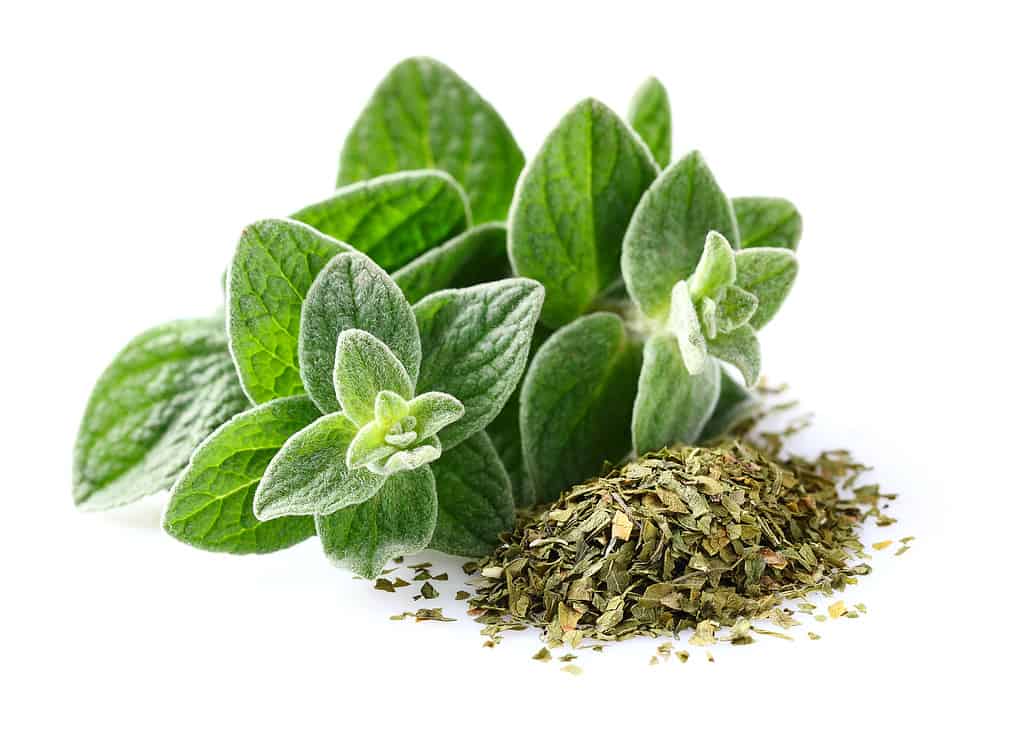
Fresh and dried oregano can add flavor to your cooking.
©dionisvero/ via Getty Images
While also enjoying similar growing conditions as rosemary, oregano has the added bonus of acting as ground cover for upright rosemary plants. You can plant them at the base and make the best use of your garden space. For those wanting to maximize the harvest in a small garden area, keeping an eye on space is key. Even if you have more available space, the different levels add visual interest that keeps your garden looking great.
Rosemary tends to like more sun than oregano. This works great because the tall rosemary soaks in all the sun while the lower oregano gets to enjoy some shade. The oregano also protects the roots and keeps them cool. Because it naturally repels insects, rosemary keeps the oregano from being eaten, a common problem with low-growing plants. Talk about a great relationship between companion plants!
#6 Strawberries
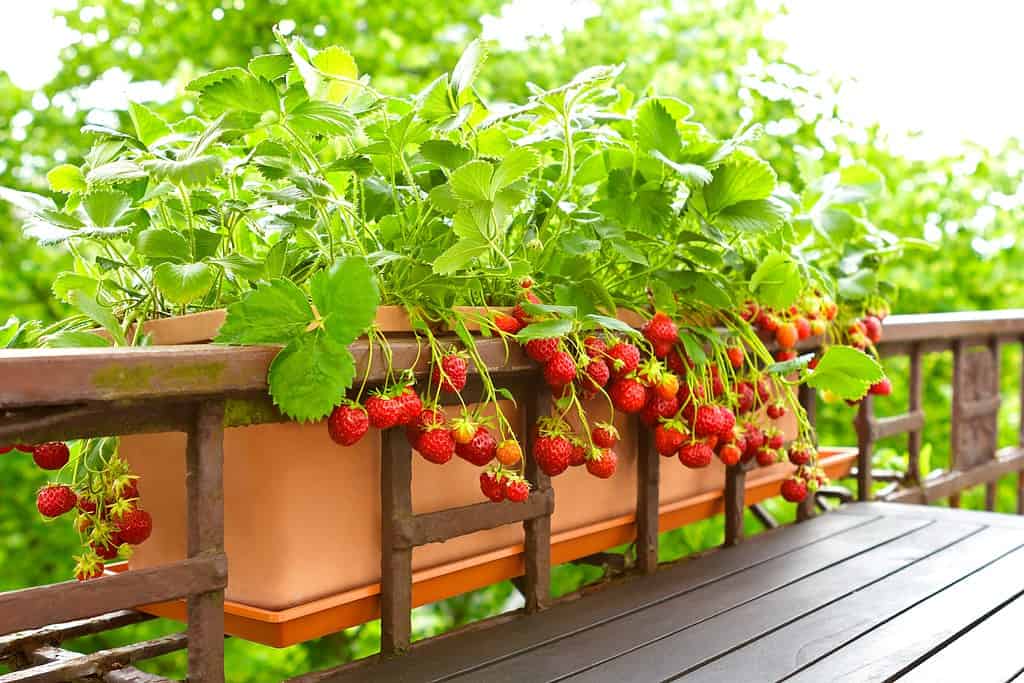
Mild days with temperatures hovering between 72 to 76 degrees provide an ideal environment for strawberries to flourish.
©Agenturfotografin/Shutterstock.com
Growing strawberries can be tricky but well worth the effort. These delicious berries play well with rosemary but the real benefit comes from the rosemary to the strawberries. Rosemary acts as a natural insect repellent for strawberries, which can be susceptible to damage from pests. Having rosemary nearby acts as a shield, resulting in bigger and better strawberries. The rosemary might even enhance the overall flavor of the strawberries.
Strawberries grow low to the ground so make sure that the rosemary won’t block the sun from getting to them. One great strategy is to plant the rosemary as an edging to the area where the strawberries grow. Strawberries often get better with great companion plants nearby. You may want to consider planting other companion plants that turn away insects to really get the best effect.
#7 Cabbages
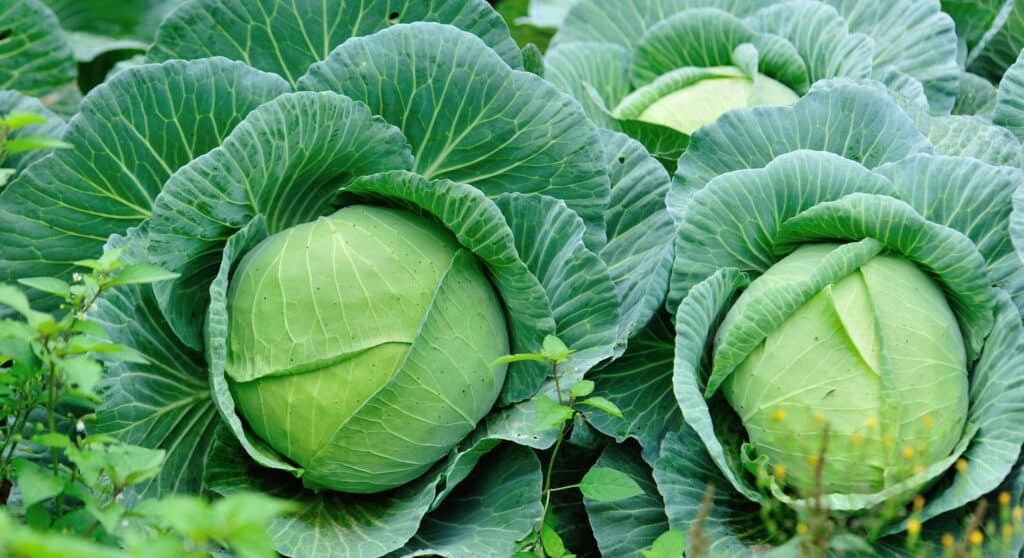
Green cabbages grow in tight bundles, which cabbage moths love to eat as caterpillars.
©iStock.com/lzf
These also benefit from having rosemary nearby. Cabbages and other members of the Brassica genus, including mustard greens, broccoli, cauliflower, and Brussels sprouts, are very vulnerable to cabbage moths. These pests can quickly devastate the entire harvest. Rosemary has a strong scent that can hide the smell of the brassica plants.
#8 Marjoram
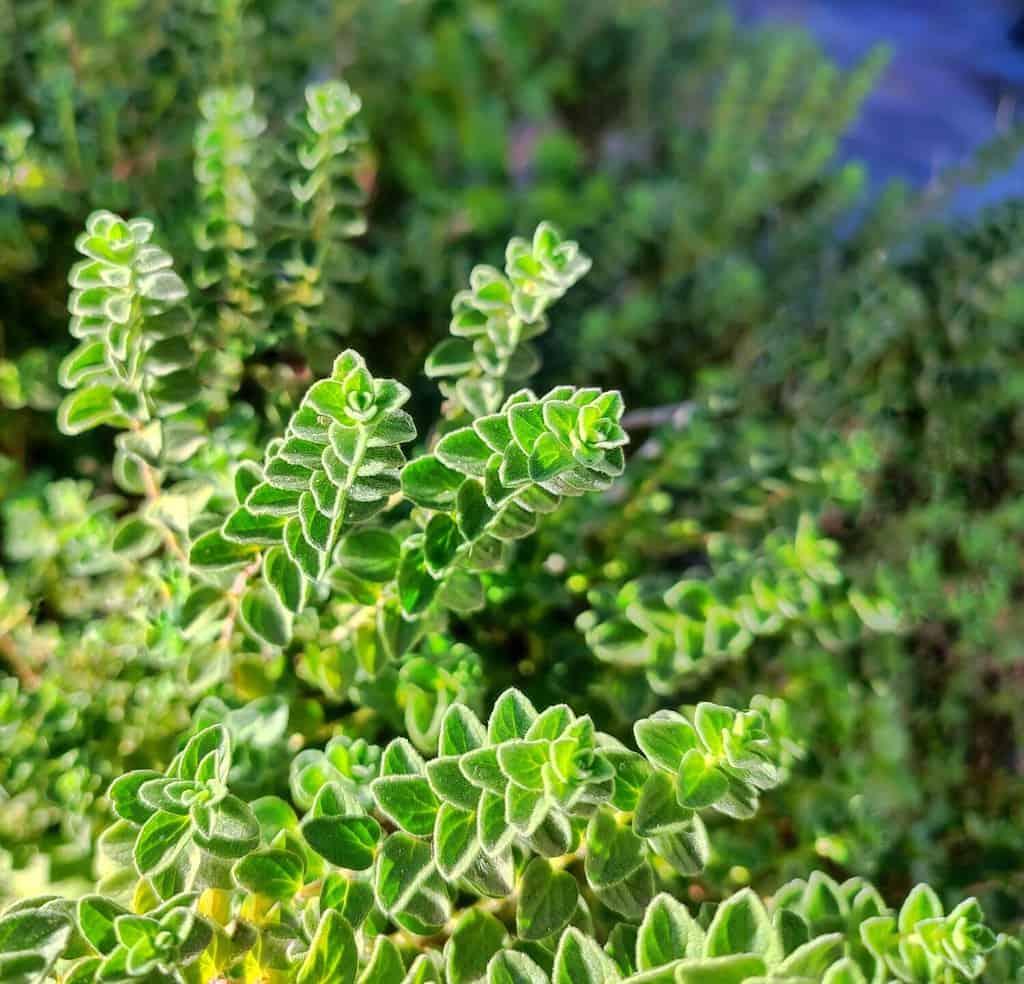
Marjoram grows well next to many other herbs and plants.
©The_AA’s/Shutterstock.com
This herb is a good companion plant for a variety of others, including rosemary. It boosts the growth of the plants near it and can enhance their flavor. Like oregano, it grows low to the ground and has small blossoms that bring bees and other pollinators to it. This is essential for healthy garden growth since all plants need pollination to grow and produce.
#9 Beans
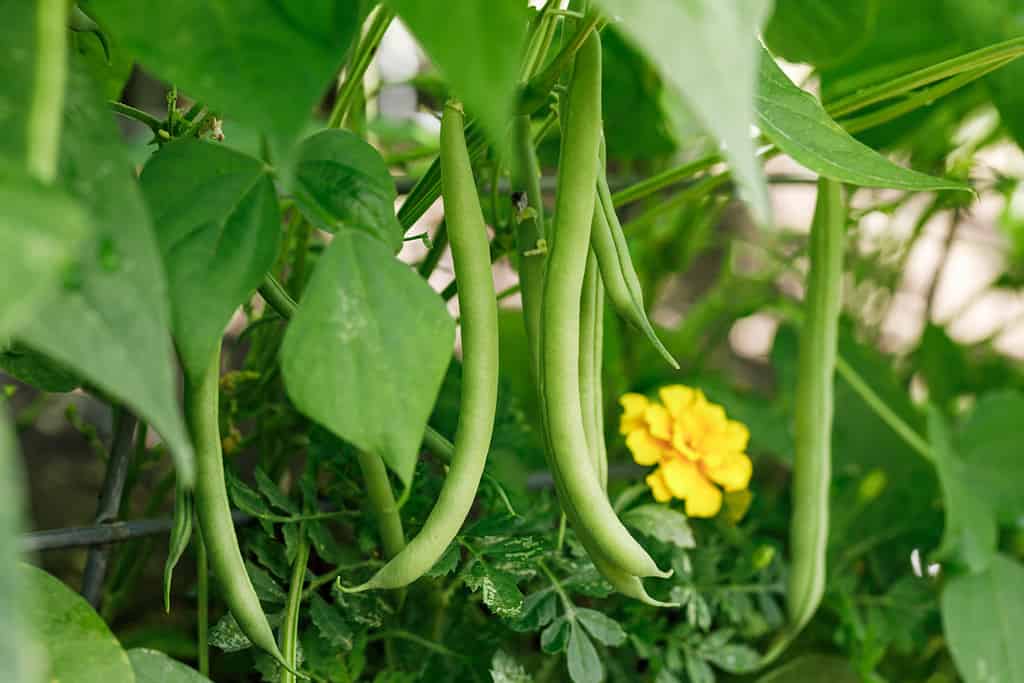
Beans hang down off vines, which grow on a supported structure in the garden.
©eurobanks/ via Getty Images
These quick-growing vines add nitrogen to the soil, which rosemary loves. Rosemary keeps the insects at bay, which the beans appreciate. This is a great companion plant pairing because both benefit from the relationship. Just make sure to position your bean supports so that the plants grow upward while still keeping the rosemary below exposed the the sun. Rosemary needs plenty of sun and it won’t appreciate being shaded by the beans overhead. Fortunately, you can train beans easily using a variety of supports that direct their growth.
Plants to Avoid Planting Near Rosemary
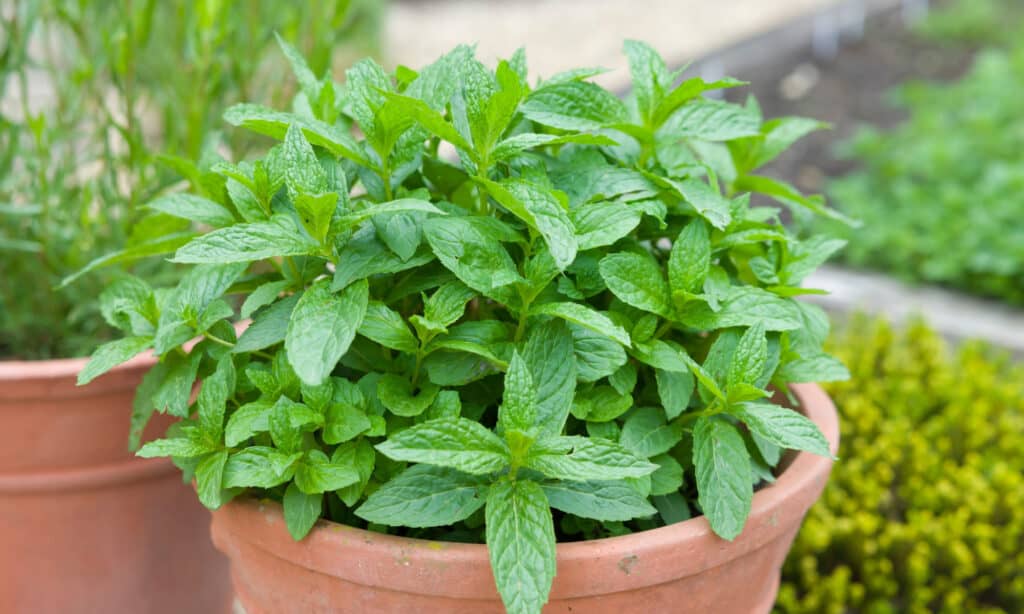
Mint is considered invasive and should be planted in a container or pot to keep it from taking over your garden.
©Paul Maguire/Shutterstock.com
You should avoid planting mint near rosemary or just about any other plant because of how quickly it can grow. Mint will take over a garden if you don’t diligently prune and pull it. Because very few gardeners have the time and energy to keep up with runaway mint, it’s generally recommended to grow this plant in a separate container. Rosemary can grow tall and compete with mint for space and nutrients. Mint also has different needs than rosemary, specifically moist soil. Keeping them in separate areas will allow you to create the ideal growing conditions for each.
Basil is another plant that likes moist or wet soil. While it won’t take over the garden like mint, it still doesn’t make a great companion for rosemary, which tends to like drier soil. Both like the sun, however, so you can keep them in separate containers next to each other and they make great neighbors.
Like herbs, tomatoes are some of the easiest plants to grow, making them a good option for beginner gardeners. But they aren’t great to plant near rosemary because of different water needs. Tomatoes need daily watering in most cases, while rosemary prefers weekly watering. Rosemary also uses some of the nutrients in the soil that tomatoes need. Fortunately, tomatoes and basil work great as companion plants that can be kept in a container near the rosemary.
Finally, pumpkins and rosemary should be kept apart. Rosemary is great at keeping insects away but is vulnerable to mildew and root rot. Pumpkins are mildew-prone, which they can typically handle on their own or with minimal intervention. But if planted nearby, the rosemary won’t do as well if mildew does arrive.
The photo featured at the top of this post is © AlexRaths/ via Getty Images
Thank you for reading! Have some feedback for us? Contact the AZ Animals editorial team.







